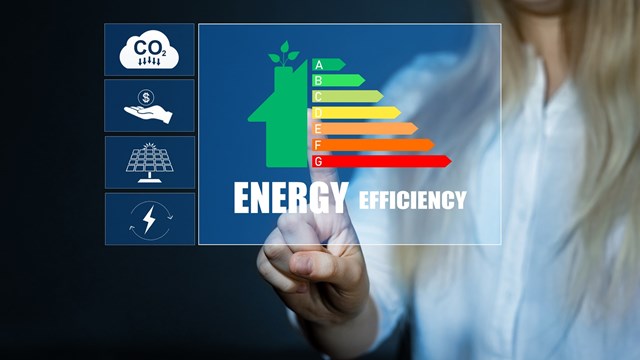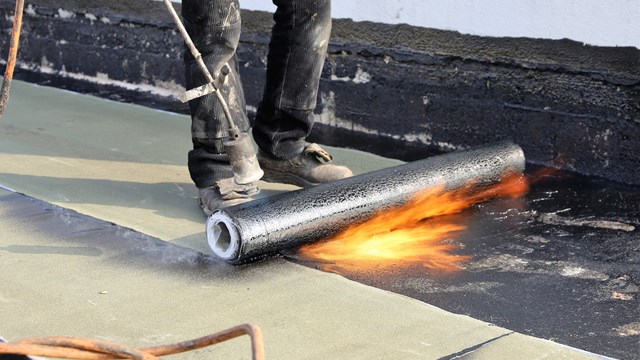
Talk of “green” homes and buildings these days often evokes images of roof gardens, solar panels, and even wind turbines humming in the background. For most condos and HOAs however, “going green” comes incrementally, in much smaller measures.
Starting with simple things like turning off lights or phasing out incandescent bulbs, and moving to major undertakings such as investing in solar energy, individual owners and boards can take any number of steps on the road to a more environmentally conscious lifestyle—and pocket significant savings along the way.
Pre-war buildings, townhouses, and even brand-new condos all present opportunities for green improvements that can lead to increased comfort and continuing cost savings—it’s just a matter of finding the shade of green that best fits your building’s means and motivation.
Taking the First Steps
Reining in electric bills—and saving energy—in your building can start with installing compact fluorescent bulbs. According to the Union of Concerned Scientists, if every household in the United States replaced just one regular incandescent light bulb with a compact fluorescent light (CFL) bulb, it would prevent 90 billion pounds of greenhouse gas emissions from power plants. That’s the equivalent of taking 7.5 million cars off the road, and over the life of the bulb, saves $30 in electricity costs. Count up all the bulbs in your building, and all those $30 add up quickly.
The U.S. Environmental Protection Agency (EPA) suggests starting by placing the CFL bulbs in fixtures that are used frequently and left on for long periods of time, so beyond individual units, boards and managers may consider them a good choice for common areas like hallways, and community rooms.
An added advantage of CFL bulbs is their long life span. While they cost more to purchase, they generally last for eight to 12 times as long as a standard bulb—which is good news for supers and maintenance personnel who won’t have to climb ladders several times a year to replace burned-out incandescents.
Other simple, greener options can be implemented with the help of building residents. While reviewing ideas to help shareholders and unit owners to cut electric use, Deborah Meehan, a Certified Energy Auditor and owner of New England Energy Audit in Londonderry, New Hampshire suggests taking a good look at home appliances.
Consider the refrigerator, just to name one major example. “Refrigerators built before 1995 can consume a considerable amount of electricity, even if they’re working fine,” Meehan says. “The only way you can tell is by testing with a meter.” In one home she visited, she says, the refrigerator alone was costing the homeowner $350 a year; when they replaced it, the cost dropped to $8 or $9 a month.
Victoria Fisher, outreach manager for New Jersey’s Board of Public Utilities (NJBPU) augments Meehan’s advice, advising apartment owners to “schedule an energy assessment with Home Performance with Energy Star through New Jersey’s Clean Energy Program.” To that, New Jersey’s Board of Public Utilities also recommends the following easy tips:
Replace household appliances with new Energy Star appliances, which use 10 to 50-percent less the amount of energy than standard models. Standard model refrigerators and freezers annually can cost upwards of $150 each.
Unplug common household appliances, such as computers, TVs, coffee makers, toasters, microwaves and radios, which often drain energy although they are not in use.
Another overlooked opportunity for easy greening may be found in other items that operate anywhere from months at a time to year-round. “Inefficient central air conditioning units and/or inefficient furnaces, boilers and hot water heaters” can guzzle energy, adding to substantial increase in utility bills. “These units should be not more than 12 years old,” says Fisher.
Changes to laundry rooms can improve water and energy use as well. Nearly 10 years ago, the U.S. Department of Energy conducted a washing-machine study at a condominium complex in Boston to determine the potential savings of converting traditional “vertical-axis” machines (top loaders) to “horizontal axis” machines (front-loaders). Their finding: “The changeover to the h-axis washer reduced the average water consumption by 41 percent. The washer energy consumption including washer energy and hot water energy fell by 50 percent due to the hot water savings as well as more efficient motor and controls. The dryer energy savings for the study was 22 percent, which mainly attributed to the high speed spin cycle of the h-axis washer reducing the remaining moisture content of the clothing after wash.”
Clean Can Be Green
Greening your building doesn’t just begin and end with changing light bulbs and performing energy audits—changes to the cleaning and maintenance products used by your building staff can help reduce environmental impact and improve its green profile.
The first step in switching to green products in your building is to identify your options—it may be as simple as discussing alternative lines carried by the cleaning supply distributors you work with already, or it may involve a little more legwork and research.
Franklin Cruz, president and CEO of Direct Environmental Corporation, a company specializing in green cleaning products and services with offices in the Bronx and Newark, New Jersey, says that building owners and managers “should educate themselves on the subject so that they can separate fact from fiction. Naturally, they are going to get some resistance from their existing cleaning supply company because they don’t want to lose the business. So, I think the board needs to do the necessary research.”
The second—and perhaps most vital—component of any change is to get your building staff on board beforehand. After all, they’re the ones who will be using the stuff, and if a switch to environmentally preferable products will require more effort to achieve the same result as what they’re currently using, their enthusiasm will likely be tepid at best. Attitudes like ‘If it doesn’t smell like bleach it won’t clean,’ and ‘If it says environmental on the label, it must be weak,’ are common—especially among staffers accustomed to using harsh chemicals and industrial-strength cleaning products.
It may take a short period of trial-and-error before you find the right green products for your building’s needs, but enlisting staff members to test new products before they’re ordered in bulk is a good start. It allows staff to be part of the decision, weeds out products that might not be as effective, and can improve your building’s green profile by phasing out environmentally detrimental products.
Finding the Right Shade
Going further down the green path requires more effort—and more capital outlay, at least at the beginning, say the experts. Overhauling your insulation building-wide, implementing co-generation programs, installing hydroelectric or solar elements, or even incorporating wind power are major steps that not every building is in a position to take either financially, structurally, or both. Determining whether or not such programs are a possibility for your particular building community requires a great deal of research, and collaboration with qualified professionals.
Fisher finds that improper insulation is most often the culprit cause of energy loss. “To address these issues, ensure that windows and doors are properly sealed and caulked,” she advises. The Home Performance with Energy Star program provides “whole house“ solutions for greater energy efficiency, which can save up to 30 percent on energy costs. Contractors certified by the Building Performance Institute (BPI) assess homes from top to bottom, identifying areas where homeowners can save energy and money. Building owners may call 866-NJSMART to ask about SmartStart Buildings to upgrade their condo buildings. Other experts explain that a thorough audit might include thermal imaging—which shows where heat is being wasted—and a “blower-door” test to hunt down air leaks in units or the building itself.
Of course, audits, new cleaning protocols or a shiny new solar panel array is only helpful if it’s implemented or installed properly, and your own people are on board with it from the start. “With any scientifically advanced technology, implementation is as crucial as the technology itself,” says Gerald Hirsch of The Water Group, LLC, in Brooklyn. “There are a number of factors that can impede performance and results. So make sure that you are dealing with a reputable company that has engineers [experienced] in implementing these technologies. The savings difference between getting it working at 100 percent versus 75 percent will more than cover any extra cost.”
Full energy audits, which generally cost between $300 and $500, come with reports detailing improvements that recommended—and which are actually doable—what they cost, and what the payback period is likely to be. And like a growing tree, seeing a return on your green investment may take some time, says Meehan. Payback times on greening efforts can vary greatly.
“If it’s between one and seven years, that’s a no-brainer,” Meehan says. “At seven to 10, you might want to think about it. And over 10, it’s generally not recommended.” Warm and fuzzy feelings aside, she says, “You have to look at it the same way you look at investing in anything else—you look at what your return is before you make the decision.”
It’s true that more and more new construction projects are using green materials and technologies, but older co-ops and condos shouldn’t feel left out of the movement toward sustainability and reduced environmental impact. Things like encouraging residents to turn off lights in empty rooms, or enforcing recycling rules may be obvious, but experts who inspect buildings—even recently-constructed condos—often find that they haven’t been taken, even as energy costs rise and discussions of climate change dominate the media. Whether your building is a landmark or a spanking-new vinyl-sided or brick townhouse, at least some shade of green is within reach of unit owners and buildings alike.
Pat Gale is the associate editor of New England Condominium magazine. Hannah Fons & Melissa Swinea contributed additional research to this article.






Leave a Comment